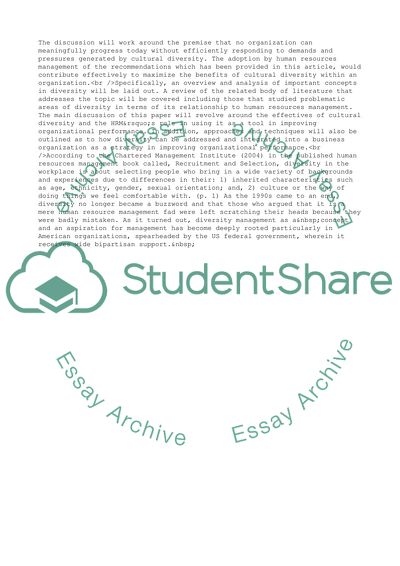Cite this document
(The Implications of Cultural Diversity on Organisational Performance Term Paper, n.d.)
The Implications of Cultural Diversity on Organisational Performance Term Paper. https://studentshare.org/management/1716485-the-implications-of-cultural-diversity-on-organizational-performance-and-the-role-of-human-resource-management
The Implications of Cultural Diversity on Organisational Performance Term Paper. https://studentshare.org/management/1716485-the-implications-of-cultural-diversity-on-organizational-performance-and-the-role-of-human-resource-management
(The Implications of Cultural Diversity on Organisational Performance Term Paper)
The Implications of Cultural Diversity on Organisational Performance Term Paper. https://studentshare.org/management/1716485-the-implications-of-cultural-diversity-on-organizational-performance-and-the-role-of-human-resource-management.
The Implications of Cultural Diversity on Organisational Performance Term Paper. https://studentshare.org/management/1716485-the-implications-of-cultural-diversity-on-organizational-performance-and-the-role-of-human-resource-management.
“The Implications of Cultural Diversity on Organisational Performance Term Paper”. https://studentshare.org/management/1716485-the-implications-of-cultural-diversity-on-organizational-performance-and-the-role-of-human-resource-management.


